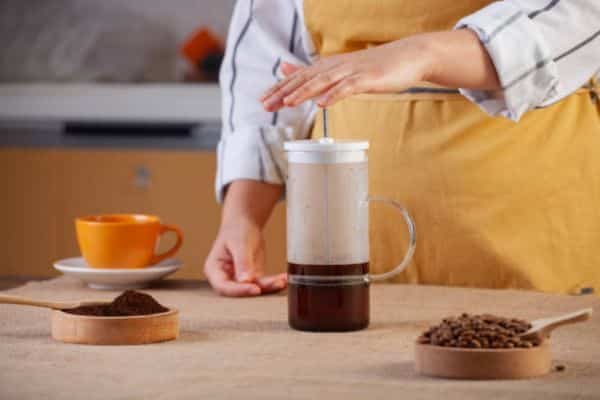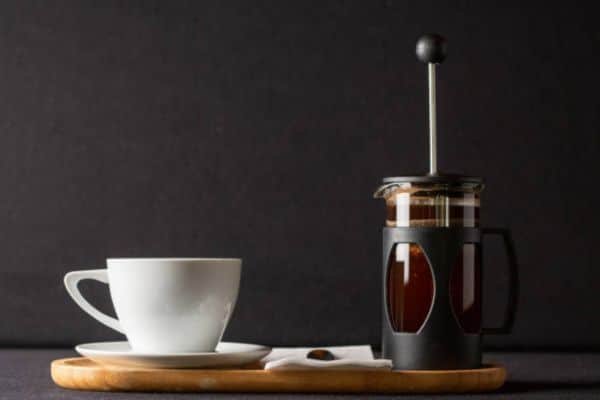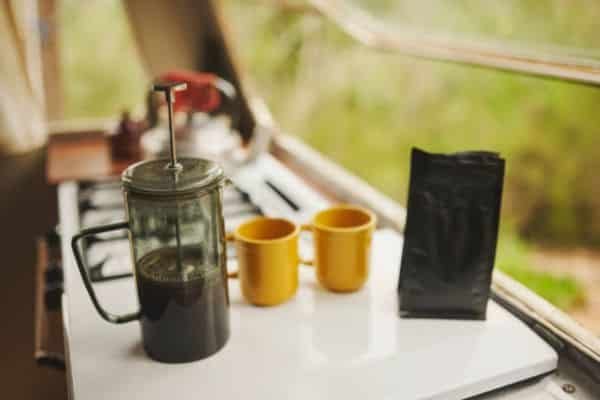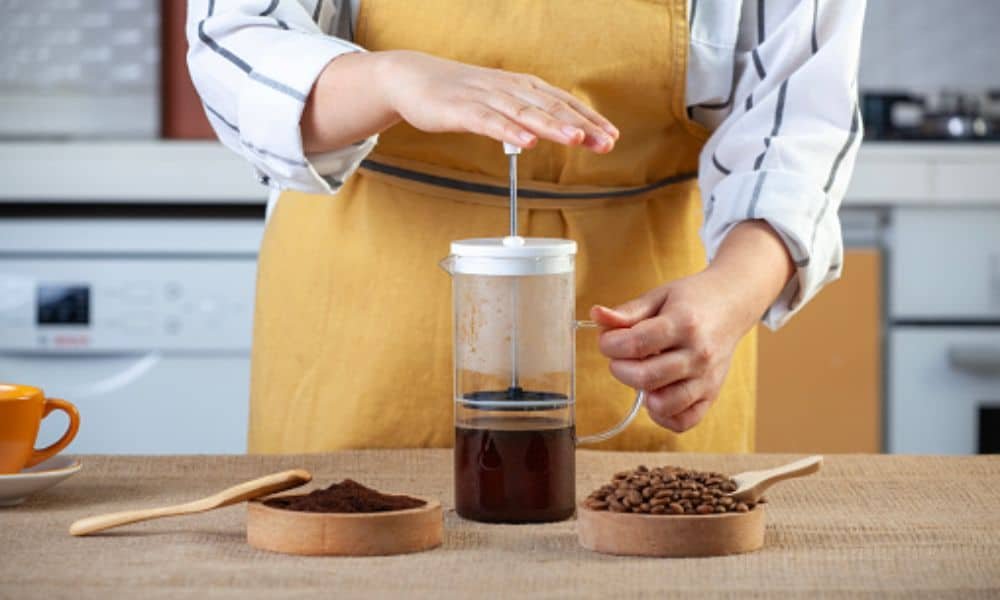One morning, I asked myself a simple question—can you make espresso in a french press? My machine had broken, and I still wanted that rich, bold cup. So, I reached for my old French press and gave it a try. To my surprise, I learned how to make espresso in a French press with just a few small tweaks.
If you’re curious how to brew espresso in a French press, you’re in the right place. I’ll share what I did, what worked best, and a few easy tips to make your cup taste amazing. Let’s brew something bold, simple, and full of flavor—right at home.
What Makes Espresso… Espresso?
Espresso stands apart for one main reason—pressure. Hot water pushes through finely ground coffee under strong force. This process lasts only a few seconds yet creates a bold, rich shot.
A true espresso shot feels smooth and thick. The golden foam, known as crema, comes from natural oils in the beans. High pressure traps these oils, giving that silky look and full aroma. The result tastes strong but balanced, never harsh.
A French press works through a gentler style. The grounds soak in hot water before a slow press. No pressure builds inside, so the drink stays round and mellow. The flavor feels broader, less sharp, yet still rich.
Brewing espresso in a French press creates a strong, smooth cup. The texture differs, yet the taste remains bold and satisfying. The missing crema changes only the look, not the joy of the drink.
Dark roast beans and a fine grind bring the taste closer to espresso strength. The mix feels warm, earthy, and balanced.
How to Make Espresso in a French Press (Step-by-Step)

Making espresso-style coffee at home feels easier than most expect. The process needs no machine—just care, patience, and a few small tools. Follow these simple steps to learn how to make espresso in a French press with a deep, rich flavor.
What You’ll Need
A small French press, about eight ounces, works best for strength.
Use freshly ground coffee, fine to medium-fine in texture.
Have hot water ready at about 200°F—not boiling.
Keep a timer or smartphone close to track the brew.
Extras like a milk frother, sugar, or flavor syrups add a custom touch.
Pro Tip: Fresh beans make a huge difference. The aroma feels brighter, and the taste grows smoother.
Step-by-Step Brewing Instructions

01. Preheat the press
Pour in hot water, swirl, and discard. This warms the glass and keeps the coffee hot longer.
02. Add coffee grounds
Use two tablespoons for every three ounces of water. This stronger ratio builds a dense, espresso-like body.
03. Pour hot water
Add water just off the boil. Stir gently to wet all grounds and release aroma.
04. Steep for four minutes
Let the mix rest. Short steeping brings bold flavor without bitterness.
05. Press slowly
Push the plunger down with steady force. Pour the coffee right away to stop extraction.
Personal Tip: A slow swirl before pressing releases oils and boosts aroma. The cup smells deeper, almost like café espresso.
Pro Tips for a More Espresso-Like Taste

A few small tweaks can turn your French press coffee into something close to true espresso. Each change adds depth, strength, and smoother texture.
Use darker roast beans
Dark roasts bring deep color, smoky notes, and natural oils. These oils build the bold body espresso fans love. Lighter beans taste bright but lack the same punch.
Grind slightly finer than regular French press grind.
A fine grind boosts extraction and flavor strength. Too coarse a grind weakens the brew, while powdery grounds feel gritty. A texture between sand and salt works best.
Pre-infuse the coffee for thirty seconds.
Pour a small splash of hot water over the grounds before brewing. This step, called “blooming,” releases trapped gas and boosts aroma. The flavor turns smoother and more balanced.
Try double brewing
Brew a small batch, then use that liquid to brew again with fresh grounds. The result tastes dense and close to a machine-pulled espresso shot.
Add frothed milk or a strong shot.
A spoon of frothed milk softens intensity without losing depth. For extra kick, mix in a small shot from another strong brew. It creates a creamy homemade latte feel.
Common Mistakes to Avoid

Even a simple brew can go wrong with small missteps. A few easy fixes keep your French press espresso rich, clean, and bold.
Using coarse grind → weak flavor
Coarse grounds let water pass too freely. The taste turns thin and dull. Finer grinds build strength and hold flavor longer.
Steeping too long → bitter taste
Over-steeped coffee pulls out harsh oils. The flavor feels burnt and dry on the tongue. Short steeping—around four minutes—keeps balance and smoothness.
Not cleaning oils → muddy flavor
Old oils coat the glass and metal mesh. Each new brew tastes heavier and less clear. A quick rinse with warm water keeps every cup bright and fresh. Once you’re done brewing don’t pour grounds down the sink Read my easy guide on how to dispose of coffee grounds from French press the clean and eco-friendly way.
Good Brew vs Bad Brew
| Feature | Good Brew | Bad Brew |
| Grind | Fine to medium-fine | Too coarse |
| Steeping Time | 4 minutes | Over 6 minutes |
| Flavor | Smooth, bold, balanced | Bitter, flat, dull |
| Aroma | Clean and rich | Heavy and oily |
| Aftertaste | Pleasant and warm | Harsh or burnt |
Pro Tip: A clean press and fresh grind always make the best-tasting cup.
French Press Espresso vs Machine Espresso
Both methods make strong coffee, but the process and taste differ. The espresso machine works with force, while the French press relies on time. Each creates its own charm in every cup.
Comparison Table
| Feature | French Press Espresso | Espresso Machine |
| Pressure | None (immersion) | 9 bars |
| Crema | Minimal | Thick golden layer |
| Texture | Smooth, full-bodied | Dense, concentrated |
| Equipment | Affordable | Expensive |
| Flavor | Strong coffee | True espresso shot |
Both methods have a place in daily brewing. The machine wins in precision and crema. The French press wins in warmth and ease. Each sip tells its own story—one bold, one comforting.
I still use my French press version on lazy weekends. It gives me 80% of the espresso flavor for 5% of the cost. The taste feels cozy, real, and simple—just how a home coffee should feel.
FAQs
Can I use espresso beans in a French press?
Yes! Espresso beans are just dark-roasted coffee beans. They bring extra depth and oil, perfect for espresso-style flavor.
How can I make it taste closer to real espresso?
Choose darker roasts, use a fine grind, reduce water, and keep steeping short. Each step adds body and strength to the cup.
Is French press espresso good for lattes or cappuccinos?
Absolutely. The strong base blends well with steamed milk or foam. It makes a creamy, smooth homemade version of your café favorite.
Final Thoughts
A French press can brew espresso-style coffee that feels bold and comforting. The flavor may not match a machine shot, yet it delivers strong taste and rich aroma with little effort.
Each cup brings warmth, balance, and that cozy home-made charm. The method fits busy mornings or slow weekends alike. No fancy tools, no rush—just simple joy in every pour.
It may not replace your local café shot, but for daily brewing, this method gives a bold, satisfying cup right from your countertop. The taste feels genuine, the process calm, and the reward worth every sip.

